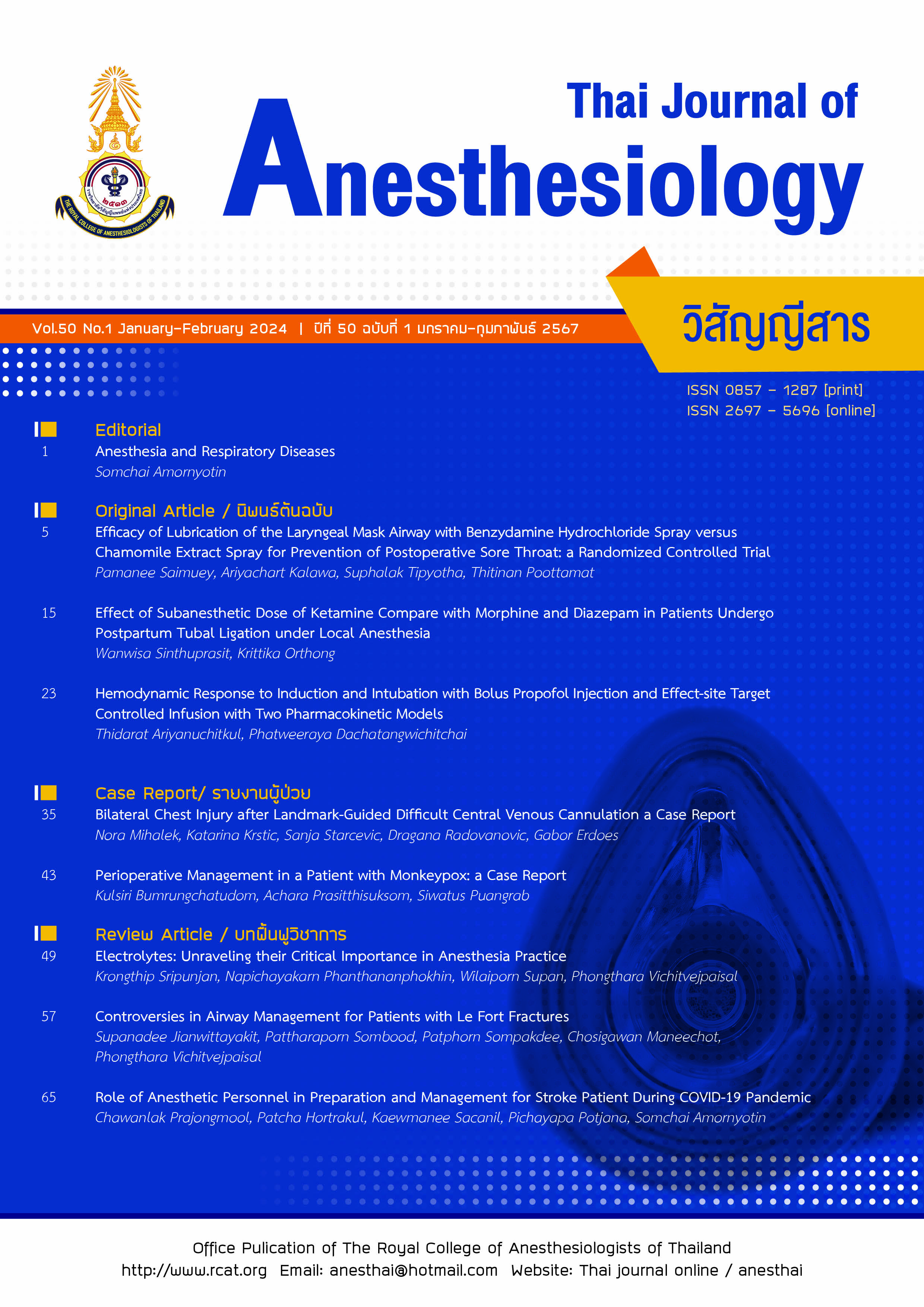Anesthesia and Respiratory Diseases
Main Article Content
Abstract
In patients with underlying respiratory pathology, the changes in respiratory physiology may lead to additional clinical problems during the conduct of anesthesia and in the perioperative period. An understanding of the disease permits the anesthetic personnel to comprise the potential complications and manage the anesthesia consequently. Failure to recognize patients who are at increased risk may result in patients not receiving optimal perioperative care. Patient monitoring and support are also critical and should be directed toward normalizing respiratory function and supporting the goal of the respiratory system, which is to deliver oxygen to and remove carbon dioxide from tissues and organs throughout the body. Importantly, the risk identification, pre-operative optimization and appropriate anesthetic management, could be reduced the risks of developing postoperative complications in the patients with respiratory disease.
Article Details

This work is licensed under a Creative Commons Attribution-NonCommercial-NoDerivatives 4.0 International License.
References
Karcz M, Papadakos PJ. Respiratory complications in the postanesthesia care unit: a review of pathophysiological mechanisms. Can J Respir Ther. 2013;49:21-9.
Degani-Costaa LH, Faresina SM, Falcão LFR. Preoperative evaluation of the patient with pulmonary disease. Rev Bras Anestesiol. 2014;64:22-34.
Barisione G, Baroffio M, Crimi E, Brusasco V.
Beta-adrenergic agonists. Pharmaceuticals (Basel). 2010;3:1016-44.
Grosbois JM, Riquier C, Chehere B, et al. Six-minute stepper test: a valid clinical exercise tolerance test for COPD patients. Int J Chron Obstruct Pulmon Dis. 2016;11:657-63.
Amornyotin S. Sedation and monitoring for gastrointestinal endoscopy. World J Gastrointest Endosc. 2013;5:47-55.
Amornyotin S. Sedative and analgesic drugs for gastrointestinal endoscopic procedure. J Gastroenterol Hepatol Res. 2014;3:1133-44.
Amornyotin S. Ketamine: pharmacology revisited. Int J Anesthesiol Res. 2014;2:42-4.
Cammu G. Residual neuromuscular blockade and postoperative pulmonary complications: what does the recent evidence demonstrate? Curr Anesthesiol Rep. 2020;10:131-6.
Saraswat V. Effects of anaesthesia techniques and drugs on pulmonary function. Indian J Anaesth. 2015;59:557-64.
Amornyotin S, Chalayonnavin W, Kongphlay S. Recovery pattern and home-readiness after gastrointestinal endoscopy. J Med Assoc Thai. 2007;90:2352-8.
Abdo WF, Heunks LMA. Oxygen-induced hypercapnia in COPD: myths and facts. Crit Care. 2012;16:323.


